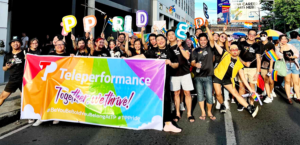
Last week the topic of the modernized jeepney was raised in this space, where the ancient, inefficient, unsafe, carbon emissioning, and mostly DIY qualities of the vehicle itself was discussed, as the replacement of that iconic Pinoy machine is the crux of the PUVMP (Public Utility Vehicle Modernization Program) and the reason why frustrated jeepney operators and drivers called for a transport strike.
We are already aware of the foibles and limitations of the jeepney so we won’t dwell on those. However, while writing the column I started thinking of the other aspects of our chaotic transport system that are also in dire need of modernization, which should hopefully be done in parallel with the replacement of the vehicle.
For a modernization program to be effective, it has to focus on more than just the vehicle. Allow me to list down some aspects that do not seem to have been given the attention it deserves in the implementation of the PUVMP.
Let’s assume that the “modern jeepney” aka the boring minibus, has become the PUV of choice, and there is nothing we can do about it at this point. Let us look at what else our public transportation system needs to fully modernize.
The biggest thing we are missing is a better route system that comes with a dispatching schedule with fixed stops. Our government has decided to modernize the jeepney but not the system, so aside from the airconditioning and the lack of local artistry on the vehicle, we are still stuck with the same transport chaos that we had before. I know it is going to be a huge ask if our towns and cities suddenly require jeepneys to pick up and drop off passengers only at designated areas, with some sort of a schedule instead of the usual wait-till-its-kinda-full system most drivers currently employ to maximize their incomes, but we need to put a system in place if public transportation and the transportation system in general, is going to see any improvement. Jeepney stops with schedules mean we would no longer be at the mercy of the fickle minds of drivers, and going to a stop and knowing that one will be passing by regularly, according to a schedule, will make our lives a little easier to plan.
Without a route system with designated stops, calling whatever it is they are trying to attempt “modernization” is a joke. And while they are at it, transport officials might also want to integrate whatever new routes that are planned into map apps so any visitor or tourist can use our public transportation systems without having to decode how to use all those destinations slapped at the side of the PUV that only the locals understand.
Another aspect that needs modernization is the payment system. While there are attempts to implement a beep-card system, the PUVMP is also a golden opportunity to establish a world-class payment system because we’d be doing it from scratch. Contactless payment via cards or mobile phones, as well as better ways of handling cash payments, need to be explored in the name of modernization.
Another missed opportunity is how we haven’t really greened the PUV system. Yes, switching from surplus engines to brand new ones is a significant improvement, but if we weren’t rushing into this program, we could’ve gone a step further and made everything greener. We essentially wasted this opportunity to go one step further and switch to hybrid or electric PUVs, lowering further the overall emissions of the public transport sector.
Maintenance is another aspect that should’ve been integrated into the PUVMP. All these brand new vehicles will be old, ugly, and as polluting as their ancestors within a few years if they are not properly maintained. If we can’t make them greener, then we might as well make maintenance a priority so those engines stay efficient as long as possible. It makes sense for the bottom line as it extends the service life of the unit, while at the same time it also benefits the planet. Hopefully DIY maintenance with surplus parts and no preventive maintenance programs will no longer be a defining feature of the jeepney.
All these different aspects of modernization which should’ve been part of the PUVMP fall under the area of future proofing. This means building a system that doesn’t become obsolete after just a few years, which is usually the eventual fate of any half-baked modernization program. In an ideal world, everything has to be future-proofed so it can serve the community properly and efficiently, without needing to spend on replacements, as long as possible.
Unfortunately for Filipinos, the “modernized” system that we are left with now, which isn’t even half baked or undercooked, definitely isn’t future proof. If you come to think of it, our “modern” jeepneys is something that was already obsolete the moment it rolled off the production floor and into our streets where chaos still reigns because the public transportation system itself was not improved.
But because we are a famously resilient people, perhaps we can try again next time, when government forces the entire sector to loan billions once more to comply with another half-baked attempt at modernization.*







